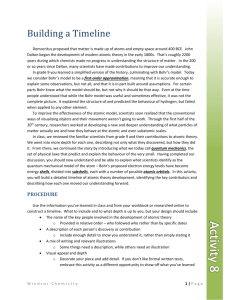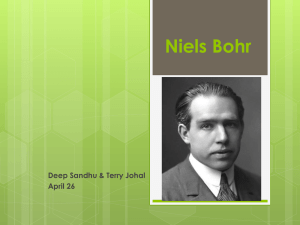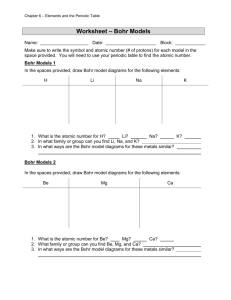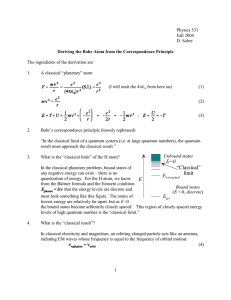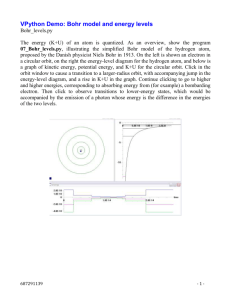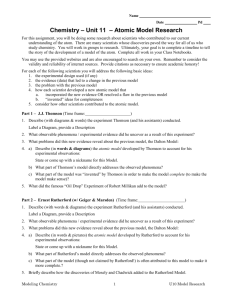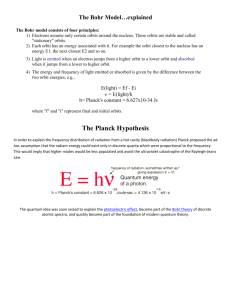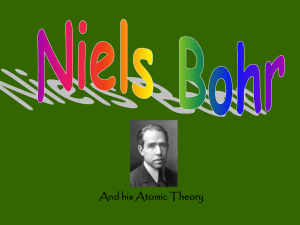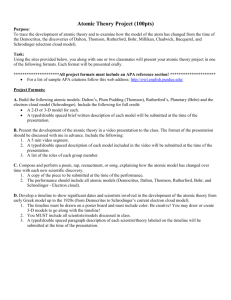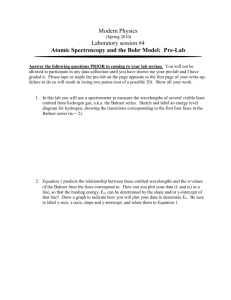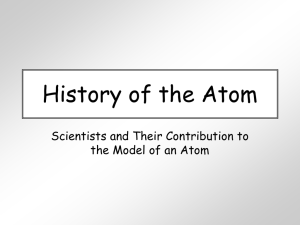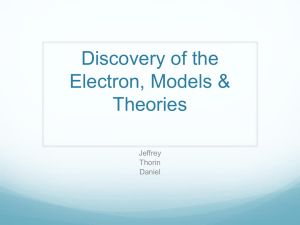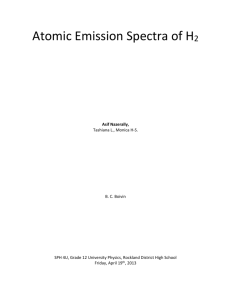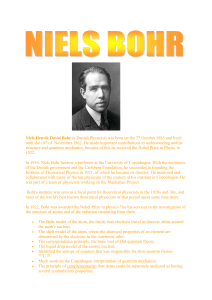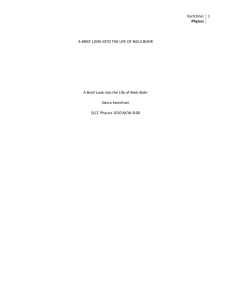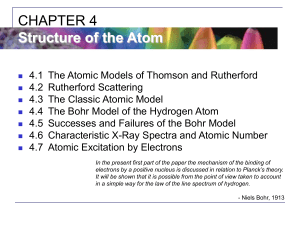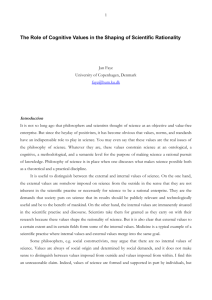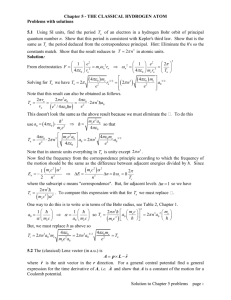file
advertisement
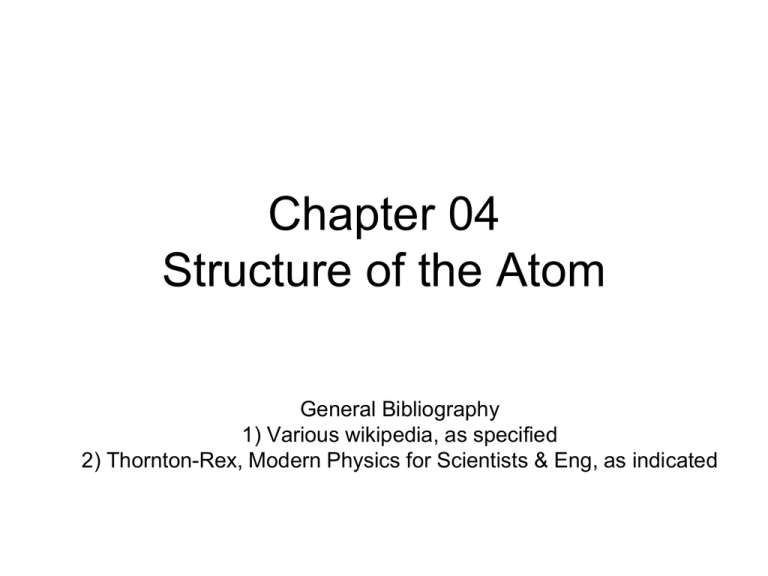
Chapter 04 Structure of the Atom General Bibliography 1) Various wikipedia, as specified 2) Thornton-Rex, Modern Physics for Scientists & Eng, as indicated Outline • • • • • • • 4.1 Atomic Models of Thomson & Rutherford 4.2 Rutherford Scattering 4.3 Classical Atomic Model 4.4 Bohr Model 4.5 Failures of the Bohr Model 4.6 Characteristic X-Ray Spectra 4.7 Atomic Excitations 4.1 Plum Pudding Model J.J. Thomson Positive pudding with negative ‘raisins’ Electrons oscillate about their equilibrium position when heated and produce EM radiation If made oscillations about ~10-10 m, could produce visible wavelengths, but never line spectra. 4.1 Geiger-Marsden-Rutherford http://en.wikipedia.org/wiki/Geiger%E2%80%93Marsden_experiment http://www.kutl.kyushu-u.ac.jp/seminar/MicroWorld1_E/Part2_E/P23_E/Geiger_Marsden_E.jpg 4.2 Geiger-Marsden-Rutherford Assume massive positive objects Coulomb force 2 Z1Z 2e 2 1 count rate ~ 4 KE sin 2 Derivation on pages 131-137 4.2 Geiger-Marsden-Rutherford Example 4.4 & 4.5: Estimate distance of closest approach for an alpha particle striking an aluminum nucleus KE = 7.7 MeV s 4.3 Classical Atomic Model v r Using Newtonian Mechanics & JJThomson’s anticipated sizes: 1. Estimate the speed of the orbiting electron 2. Total Energy of the system 4.3 Classical Atomic Model Failures of the classical model: 1. 2. 4.4 Bohr’s Postulates • A countable number of “stationary states” exist. (electrons in a selection of allowed orbit radii) • EM radiation emitted when electron jumps/transitions between states • Classical rules apply to stationary states, but not during transitions between states. • …Angular momentum occurs in integer multiples of h/2p. n=1 n=2 n=3 4.4 Bohr Model 4p o 2 ao m e2 rn n2 ao En e2 8p o ao n 2 13.6 (in eV ) 2 n 1 e2 vn n 4p o v1 e2 1 137 c 4p o c 4.4 Bohr Model 4.5 Successes & Failures of Bohr Model Reduced Mass Correction orbit radius r re Coulombseparation r me M m agic fix m e me M 4.5 Successes & Failures of Bohr Model • + Rydberg Eqn predicts many lines of He (except for a few extra lines) • Higher resolution diffraction gratings in advanced spectrographs indicated some transitions were multiple (fine structure) • Bohr’s “n” quantum number is only partially associated with angular momentum (1s, 2s, 3s,… states do not have angular momentum) • Worked best for single-electron atoms – H+, He+, Li+ 4.6 Characteristic X-Ray Spectra 4.7 Atomic Excitation
